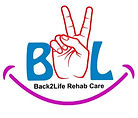DO'S AND DON'TS IN LOW BACK PAIN
- b2lcare

- Dec 16, 2018
- 3 min read
Updated: Dec 17, 2018
Do’s and don’ts in low back pain exercise
Lower back pain exercises can give you relief, but the wrong moves can leave you in even more agony
Most back pain is mechanical, meaning day-to-day life stresses lead to overload
few cases are caused by something more serious, such as a fracture, spinal tumor or systemic disease, spondylolysthesis,spondylosis ,PIVD etc.
“These require medical attention.”
Do Exercise: A misconception we hear often from patients who suffer from spinal conditions and chronic back pain is that avoiding exercise or movement may somehow help alleviate the pain. In most cases, nothing could be further from the truth. Continuous movement, including walking, can do a world of good for people with spinal conditions and back pain. Rest when you must during periods of severe, acute pain, but otherwise move as often as you can.
Don't Overdo It: While exercise is important for back pain relief and those who suffer from spinal deformities, knowing when to stop is critical. For most with severe deformity, trying to exercise our way back to a straight spine is impossible. In fact, overdoing any one type of exercise for too many repetitions or too long a duration of time may result in further damage and pain. Keep exercise to an appropriate level where you feel better afterwards, not worse.
Do Think Outside the Box: Many believe that the heavy, clunky machines at the gym are the only options for exercise. They aren't. And for those with spinal deformity, they're also not the most recommended. Remember that quality, focused stretching is great exercise and you don't need equipment to do it. If you haven't already, try yoga, Pilates and other stretching moves, some of which are designed specifically for building and stabilizing the core, an important area of focus for anyone with spinal problems..
Don't Go High Impact: Especially if you're new to an exercise routine, stick with lower impact activities if you've been diagnosed with a spinal deformity. Running and high-impact aerobics can be fine for many with spinal conditions, but they can also put undue amounts of stress on a spine that already has some challenges. Most people can still derive major exercise and health benefits from lower impact activities like swimming, than the higher-impact exercises that can potentially put our spines at further risk. So rather than using heavy weights and "grunting through it," lighter weights with more repetitions may actually be safer and achieve a better result. When it comes to exercise, sometimes less really is more.
Do Cool Down Properly: Now this is advice I'd give anyone who exercises regularly, because most people don't take the time to do it. No matter the method of exercise performed, a proper cool-down, even if it's just for five minutes, is a must. "Cooling down" can include stretching muscles fatigued during exercise or breathing deeply for a few minutes while you allow your heart rate to return to normal.
Don't Forget to Hydrate: The bony structures of our spines aren't the only things that hold them in place and keep them stable. The muscles surrounding and benefitting them have an important job in how well our spines function, too. Those muscles, especially after they've had a healthy dose of exercise, need care, too. And the best you can give them is hydration. Ideally, it's best to drink plenty of water throughout an exercise routine. But, if you've found that you finished your workout and haven't had anything to drink, take the time to focus on drinking at least eight ounces of water immediately, then plenty more throughout the day.
While spinal deformity should not be a deterrent for most people to begin a solid exercise plan, knowing what to do and how to do it are important for limiting injury and deriving the most benefit. Always talk to your doctor before beginning any exercise program to make sure you're both on the same page. Then, get to work. In no time at all, you'll likely begin to realize the benefit to your spine and to your overall health.
Don’t lift weights overhead or on your shoulders. Shoulder presses and other overhead weight moves stress the spine and shouldn’t be done when you have back pain, “Using weights overhead adds pressure to the spinal discs,”
Also avoid exercises in which a weight rests on your shoulders, such as weighted squats.
















I was diagnosed with Parkinson’s disease four years ago. For over two years, I relied on Levodopa and several other medications, but unfortunately, the symptoms kept getting worse. The tremors became more noticeable, and my balance and mobility started to decline quickly. Last year, out of desperation and hope, I decided to try a herbal treatment program from NaturePath Herbal Clinic. Honestly, I was skeptical at first, but within a few months of starting the treatment, I began to notice real changes. My movements became smoother, the tremors subsided, and I felt steadier on my feet. Incredibly, I also regained much of my energy and confidence. It’s been a life-changing experience I feel more like myself again, better than I’ve…